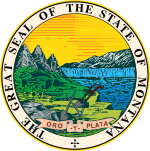
Burton Kendall Wheeler was an attorney and an American politician of the Democratic Party in Montana, which he represented as a United States senator from 1923 until 1947.

Joseph Moore Dixon was an American Republican politician from Montana. He served as a Representative, Senator, and the seventh Governor of Montana. A businessman and a modernizer of Quaker heritage, Dixon was a leader of the Progressive Movement in Montana and nationally. He was the national chairman for Theodore Roosevelt running for the presidency as the candidate of the Progressive Party in 1912.
The 1920 Democratic National Convention was held at the Civic Auditorium in San Francisco, California from June 28 to July 6, 1920. It resulted in the nomination of Governor James M. Cox of Ohio for president and Assistant Secretary of the Navy Franklin D. Roosevelt from New York for vice president. The 1920 Democratic National Convention marked the first time any party had held its nominating convention in a West Coast city.
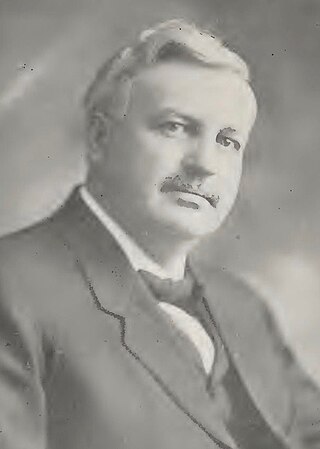
Samuel Vernon Stewart was an American attorney and Democratic Party politician, an attorney, former Montana Supreme Court Justice and the sixth Governor of Montana.
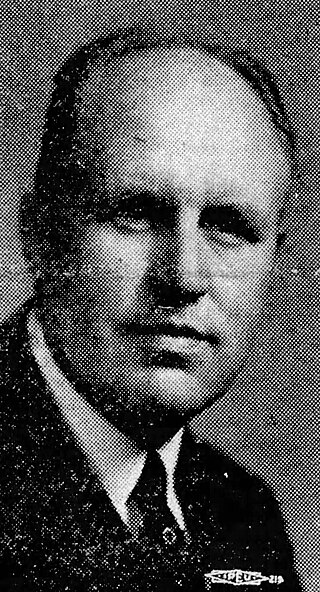
Leif Erickson was an American attorney who served as an Associate Justice of the Montana Supreme Court from 1939 to 1945.
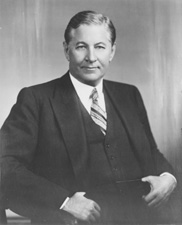
The 1934 United States Senate special election in Montana took place on November 6, 1934. Incumbent United States Senator John E. Erickson, who, as governor, had appointed himself to the seat in 1933 upon the death of Thomas J. Walsh, ran for re-election. However, he was defeated in the Democratic primary by James E. Murray, who was the former Silver Bow County Attorney and the Chairman of the State Advisory Board of the Public Works Administration. In the general election, Murray defeated Scott Leavitt, a former United States Congressman who had represented Montana's 2nd congressional district, and an independent candidate in a landslide to win his first term in the Senate.

The 1930 United States Senate election in Montana took place on November 3, 1936. Incumbent United States Senator James E. Murray, who was first elected to the Senate in a special election in 1934, ran for re-election. He narrowly emerged from a competitive and close Democratic primary, wherein he was challenged by United States Congressman Joseph P. Monaghan, who represented Montana's 1st congressional district. In the general election, Murray was opposed by Thomas O. Larson, a State Senator and the Republican nominee, and Monaghan, who, after losing the primary, ran as an independent candidate. Murray ended up winning a second term, and his first full term, in a landslide, defeating both of his opponents by a comfortable margin.

The 1942 United States Senate election in Montana took place on November 3, 1942. Incumbent United States Senator James E. Murray, who was first elected to the Senate in a special election in 1934 and was re-elected in 1936, ran for re-election. Following his victory in a competitive Democratic primary, Murray advanced to the general election, where he was opposed by former United States Attorney for the District of Montana Wellington D. Rankin, the Republican nominee and brother of representative Jeannette Rankin. In a closely fought election, Murray narrowly defeated Rankin to win re-election to his third term and his second full term in the Senate.

The 1922 United States Senate election in Montana took place on November 7, 1922. Incumbent United States senator Henry L. Myers, who was first elected to the Senate in 1910, and was re-elected in 1916, declined to seek re-election. Former United States Attorney Burton K. Wheeler won the Democratic primary and advanced to the general election, where he faced Carl W. Riddick, the United States Congressman from Montana's 2nd congressional district and the Republican nominee. Ultimately, Wheeler defeated Riddick comfortably and won his first term in the Senate.

The 1928 United States Senate election in Montana took place on November 6, 1928. Incumbent United States Senator Burton K. Wheeler, who was first elected to the Senate in 1922, ran for re-election. After successfully defeating several challengers in the Democratic primary, Wheeler advanced to the general election, where he faced Republican nominee Joseph M. Dixon, the former Governor of Montana who had previously served in the United States Senate from 1907 to 1913. Though the election was closer than Wheeler's first election, he still managed to defeat Dixon to win his second term in the Senate.

The 1934 United States Senate election in Montana took place on November 6, 1934. Incumbent United States Senator Burton K. Wheeler, who was first elected to the Senate in 1922, and was re-elected in 1928, ran for re-election. After easily winning the Democratic primary, Wheeler moved on to the general election, where he faced George M. Bourquin, a former United States Federal Judge and the Republican nominee. In a stark contrast to his close campaign in 1928, Wheeler won re-election to his third Senate term in a landslide.

The 1940 United States Senate election in Montana took place on November 5, 1940. Incumbent United States Senator Burton K. Wheeler, who was first elected to the Senate in 1922, and was re-elected in 1928 and 1934, ran for re-election. Though he faced a serious challenger in the Democratic primary, he emerged victorious, and advanced to the general election, where he faced E. K. Cheadle, a state district judge and the Republican nominee. Just like in 1934, Wheeler won re-election in a landslide, winning his fourth term in the Senate.

The 1946 United States Senate election in Montana took place on November 5, 1946. Incumbent United States Senator Burton K. Wheeler, who was first elected to the Senate in 1922, and was re-elected in 1928, 1934, and 1940, ran for re-election. He was challenged in the Democratic primary by Leif Erickson, the Chief Justice of the Montana Supreme Court, and, following a close election, was narrowly defeated by Erickson. In the general election, Erickson faced State Senator Zales Ecton, the Republican nominee. Ultimately, Ecton defeated Erickson by a fairly wide margin, winning his first and only term in the Senate. Another Republican would not be elected Senator from Montana until 42 years later, when Conrad Burns narrowly won the 1988 election.

The 1968 Montana gubernatorial election took place on November 5, 1968. Incumbent Governor of Montana Tim Babcock, who became Governor upon the death of previous Governor Donald Grant Nutter and was elected in 1964, ran for re-election. He faced serious competition in the Republican primary from his Lieutenant Governor, but managed to comfortably win renomination. Advancing to the general election, Babcock faced Forrest H. Anderson, the Attorney General of Montana and the Democratic nominee, and independent candidate Wayne Montgomery of the New Reform Party. Ultimately, Anderson managed to defeat Babcock by a solid margin, winning his first and only term as governor. As of 2023, this is the last time an incumbent Governor of Montana lost re-election.
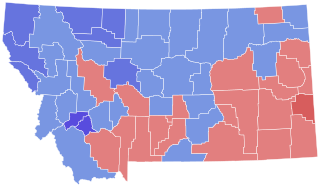
The 1948 Montana gubernatorial election took place on November 2, 1948. Incumbent Governor of Montana Sam C. Ford, who was first elected Governor in 1940 and was re-elected in 1944, ran for re-election. He won the Republican primary and advanced to the general election, where he faced John W. Bonner, the former Attorney General of Montana and the Democratic nominee. Ultimately, Bonner defeated Ford handily in his bid for re-election, winning his first and only term as governor.

The 1924 Montana gubernatorial election took place on November 4, 1924. Incumbent governor of Montana Joseph M. Dixon, who was first elected governor in 1920, ran for re-election. Dixon won a competitive Republican primary, and moved on to the general election, where he faced John E. Erickson, a former district court judge and the Democratic nominee; and Frank J. Edwards, the 1916 Republican nominee for governor and the Farmer–Labor Party nominee. Ultimately, Erickson managed to defeat Dixon in his bid for re-election, winning what would be the first of three terms as governor.

The 1916 Montana gubernatorial election took place on November 7, 1916. Incumbent Governor of Montana Sam V. Stewart, who was first elected governor in 1912, ran for re-election. After comfortably winning the Democratic primary, he advanced to the general election, where he faced Frank J. Edwards, the former mayor of Helena, who narrowly emerged victorious in a close Republican primary. Benefitting from then-President Woodrow Wilson's landslide victory in Montana in the presidential election that year, Stewart narrowly won re-election to his second and final term as governor.

The 1924 United States presidential election in Indiana took place on November 4, 1924, as part of the 1924 United States presidential election which was held throughout all contemporary 48 states. Voters chose 15 representatives, or electors to the Electoral College, who voted for president and vice president.

The 1924 United States presidential election in Iowa took place on November 4, 1924, as part of the 1924 United States presidential election which was held throughout all contemporary 48 states. Voters chose 13 representatives, or electors to the Electoral College, who voted for president and vice president.

The 1924 United States presidential election in Maryland took place on November 4, 1924. All contemporary 48 states were part of the 1924 United States presidential election. State voters chose 8 electors to the Electoral College, which selected the president and vice president.

